|
There’s two ways to be stupid: so stupid that you don’t know anything; and so stupid that you don’t suspect anything. Now, that’s really stupid! I think I’ve been cured of both these manifestations during my research into the Bermuda Triangle.
Like everybody else I was casually interested in “phenomena” or mysteries of the world. Perhaps my generation is more than others. Growing up in the 1970s, the “Phenomena Decade,” inundated a youth with the unsolved around us. UFOs were always very popular and the abduction angle had just come into vogue. Bermuda Triangle was, of course, very hot, plus several others like Bigfoot, his cousin Yeti, the Loch Ness monster, and the Ancient Astronaut Theory was zooming into orbit. Even the search for Noah’s Ark produced some books and documentaries.
Like most everybody else, I watched all the TV documentaries made on the subjects (the best still date to the 1970s). But like everybody else, phenomena remained a spectator’s sport. After all, where do you go to do this kind of research? Where do you start? You believe or you don’t believe, often based merely on popular arguments and pulp renditions. Most take for granted that facts are behind them. I have found this to be a specious deduction.
It was a strange set of circumstances that got me more involved. It was the late summer of 1990 that I pulled an old book out of my father’s book shelf. Besides being one of the top 30 GM dealers in the world (at that time), he had also been a pilot, ran on behalf of San Martin County the local auxiliary airport, and had several marine dealerships and licenses— basically, planes, trains, automobiles, horses and prize dogs. It was only natural he would have this book. It was Charles Berlitz’s book on the Bermuda Triangle, published in 1974, and most any aviator or yachtsman probably had a copy at one point. Some 5 million copies were sold, making it and the Bermuda Triangle a phenomenon.
I won’t go into details, but I found it quite piquing, enough so that I finished it the next day when I came home from work. I had never really considered that books might have been written on the subject before. (When the Bermuda Triangle was real hot in the early to mid 1970s I was but a kid and was naturally unaware or unconcerned with anything erudite.)
I soon collected every book on the subject. Eventually I amassed quite a library. Some were rare, some were a dime a dozen paperbacks. Some used the missing as proof for a hodgepodge of outlandish theories, while in many others the author had merely repeated the many mistakes of earlier authors. Error concerning the 575-foot V.A. Fogg started with John Spencer (Limbo of the Lost, 1973), who said it could only have been teleported from the planet. Of course, it had sunk in only 90 feet of water and is actually being used as an artificial reef to this day! The Freya, a derelict schooner in the Pacific, mysteriously found its way into the Triangle litany– the biggest mystery about it. Debunkers hardly had a higher standard. When I came across Lawrence Kusche’s book, entitled The Bermuda Triangle Mystery– Solved (1975), I found a book which fit the maxim: “You cannot judge a book by its cover.” I was hoping for far more than the selective cases he offered, and out of these only 5 or 6 were even based on an actual accident report detailing the investigation, leaving far too much room for “solutions” and elastic conclusions from inaccurate newspaper accounts. This book was endorsed by both the US Coast Guard and Lloyd’s Register of Shipping, both institutions which, understandably, are not eager to promote mysteries.
This is where I shed my “so stupid you don’t know” and where I began to shed my “so stupid you don’t suspect.” I realized no one really looked into it beyond their own point of view and beyond a superficial popular account of a missing ship or aircraft.
It was the great gap since then that made me the most curious. The last major book was published around 197. By 1990 some 13 years had gone by without a peep. If there was true mystery with this section of sea, it should be continuing. While debating with myself where to begin, a strange twist of fate happened. In February 1991 worldwide front page news proclaimed the discovery of Flight 19! A salver found them only 20 miles off Fort Lauderdale at the bottom of the sea. I talked to a former Navy pilot whom I knew, George Smith, who trained at Banana River in 1946. His first thought was that those were probably surplus that the Navy took out to sea and just dumped. In June, salver Graham Hawkes’ much touted but erroneous discovery was soundly laid to rest . . .but it nevertheless took about a month to do it – the numbers on the planes didn’t match those on Flight 19. George Smith was right! They were just surplus. When I got the Naval Board of Inquiry Report on Flight 19 months later, I was surprised. No one who had read that document from 1945 ever would have leaped to the conclusion Flight 19 could be anywhere near Fort Lauderdale. This did it for me. It was obvious no one really knew any details of these incidents.
In April 1991 I started my firsthand research. I wasn’t out to prove or debunk incidents; I was out to find them; to see just how many people, planes and ships were truly vanishing. I started looking in libraries, but this really doesn’t amount to much. Index to the New York Times gives you a few incidents. Miami Herald gives a little more. But I found out the papers were never very reliable. They had no choice but to repeat what was told them. Often rescuers and searchers themselves weren’t quite sure what to say during the heat of search operations. I had to go beyond this.
I sought every scrap in officialdom. I would not take no for an answer. Bolling Air Force Base, the legal center of the Air Force, informed a full colonel at Air Materiel Command, who then put it on letterhead for me, that there were no repositories in existence that held reports on Air Force aircraft accidents prior to the early 1970s. I bought it for a while; but finally, now not being so dumb that I don’t suspect, suspected they might be wrong. I called the Air Force Safety Center Agency at Norton Air Force Base. The answer was a quick yes. They had every report I wanted, even one that went back to 1952. All has now been moved to Kirtland Air Force Base when Norton closed. Now all reports prior to 1955 have been moved to the Historical Research Agency at Maxwell AFB, Alabama. These go back to 1915. In fact, the Air Force maintains reports back until its creation as Army Air Corp. I don’t think the experts at Bolling AFB still know this.
One of the best sources for U.S. aircraft losses is the National Transportation Safety Board. They investigate any type of aircraft accident along with the FAA (Federal Aviation Administration), after the old CAB (Civil Aeronautic Board) was discontinued. A “Brief” can be had first. A Brief is what it sounds like. It is a brief, usually one page chit with all the relevant data to inform the reader of the basics.
For more detailed information, the next step is a Preliminary Report— if the accident is very recent. If the investigation is closed, then a Factual Aviation Report should be 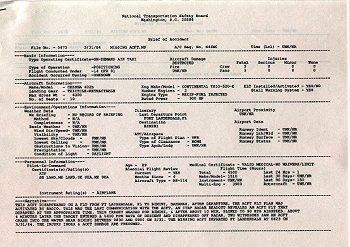 available. Factuals have all sorts of information in them. I have read all kinds of data. It is not possible to acquire a sense of what is an unusual loss if you do not know what is a “typical” accident to an aircraft. I have read over these reports, dozens and dozens of them: toxicology, pathology sections, hastily jotted notes relaying a phone tip; radar and weather readouts; engine examinations, and the minutiae of rudders and cables. There is nothing surprising to me anymore. Even failing to rebalance after painting an aircraft has caused a plane to fly straight into the ground. Flying is no science; in many ways it is an art. available. Factuals have all sorts of information in them. I have read all kinds of data. It is not possible to acquire a sense of what is an unusual loss if you do not know what is a “typical” accident to an aircraft. I have read over these reports, dozens and dozens of them: toxicology, pathology sections, hastily jotted notes relaying a phone tip; radar and weather readouts; engine examinations, and the minutiae of rudders and cables. There is nothing surprising to me anymore. Even failing to rebalance after painting an aircraft has caused a plane to fly straight into the ground. Flying is no science; in many ways it is an art.
Briefs go back to 1964, but Factuals do not antedate 1978. 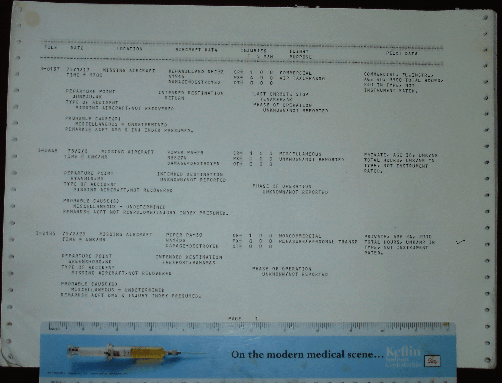 Those prior have been destroyed, unless they were a randomly published report. Because Briefs and Factuals have all this data, and furthermore exist by the thousands, they are far better than a mere statistic, which is something just pulled out of the dead file drawer. Those prior have been destroyed, unless they were a randomly published report. Because Briefs and Factuals have all this data, and furthermore exist by the thousands, they are far better than a mere statistic, which is something just pulled out of the dead file drawer.
Factuals have detailed many scenarios. Fuel starvation is common enough; but so is ditching the aircraft and surviving. Pilot error has caused many a plane to crash. Recently a pilot ran out of fuel. Examination proved he had the fuel selector on the empty tank while his other tank was full. He piled an expensive twin engine Beech into the trees outside Nassau. All survived, sitting on the branches awaiting the rescue chopper. Pilots have ventured out, foolishly, in planes unfit for flight. In one the pilot knew the electrical system was bad. Far out in the Triangle it quit completely, leaving him to contact Caicos Island with a hand held radio. He ran out of fuel, ditched, but still survived.
All this adds a queer paradox to the case of missing planes. In these instances rarely is a MAYDAY heard. It seems when communications are generally bad in the atmosphere planes also seem to vanish— a disarming correlation to the missing. Never in regular accidents have I seen reports of such selective or erratic radio communication. Those aircraft that are able to transmit coherent MAYDAYs usually ditch and their occupants survive.
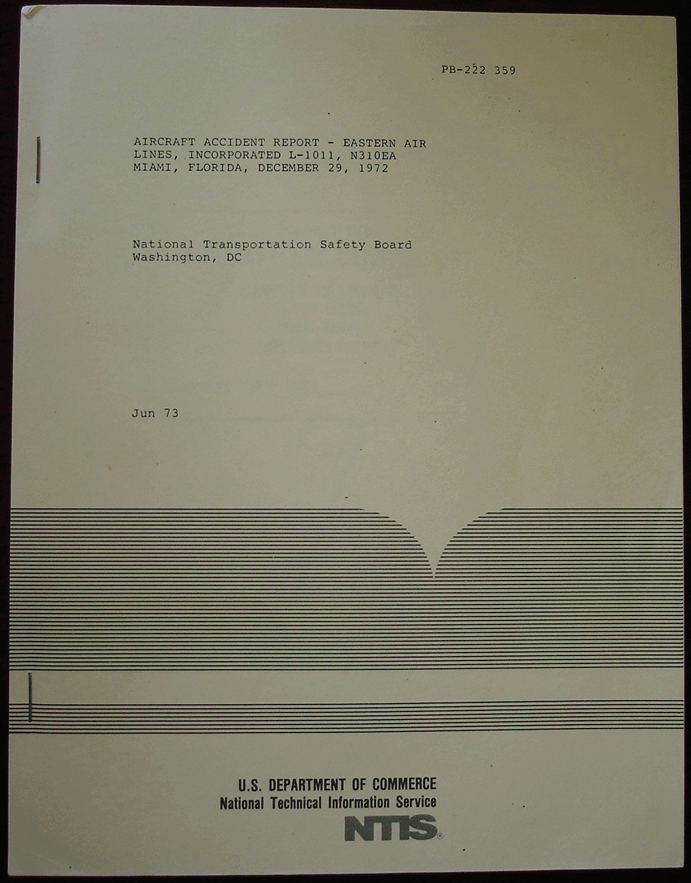 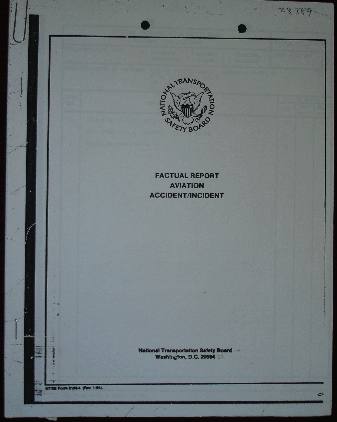 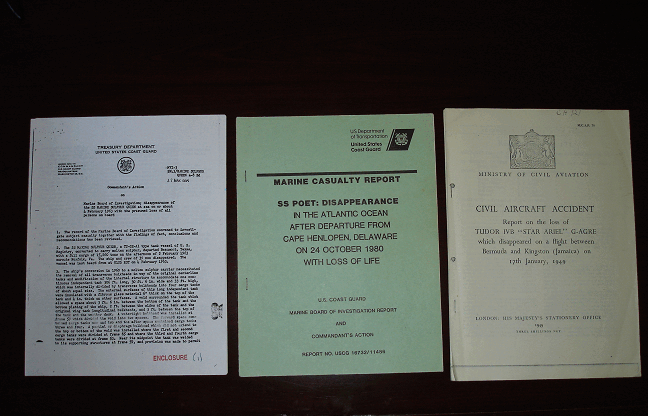
When storms are in the vicinity of a radar target, on occasion a sweep of the scope will show two “returns;” a third sweep nothing— the plane suffered a midair breakup from the convective thunderstorm activity. But when a plane vanishes, one sweep it is there, the next— nothing. There is no trace. After reading dozens of Factual Reports one cannot help but ponder all the paradoxes.
The details of marine accidents are hard to come by. When inquiring at NTSB or the Coast Guard often the reply is that neither maintain any kind of detailed summary for boat losses. The reason may best be summarized the way one captain put it to me: “There are too many. We believe too many head over the horizon with a new name.”
Highjacking is probably a large factor. Stolen boats are frequently reported around Florida’s Gold Coast, Broward county down to the Keys. But many also just vanish on pleasure cruises to and from the Bahamas. A gaggle of boats travel across the busy Florida Straits. It is not remotely impossible that big freighters have run down a few, or that pirates and drug runners can account for many others.
Sometimes the closest the Coast Guard can come to any knowledge of an incident is circumstantial: a family member or business associate reports the yacht overdue; or finally the owner is reported missing and they find his boat is gone too. Some 8 years after-the-fact, a pertinacious investigator reported that the yacht Flying Dutchman, which vanished in 1976, survived and may have been trafficking drugs. This is only one example why one really can’t fault the Coast Guard for not taking an inventory of names or even making a complete investigation. That would be like asking the FBI to investigate every stolen car in the USA.
The Coast Guard keeps statistics, district by district, on any type of loss. Let’s take 1994’s Missing Recreational Vessels for the 5th and 7th Districts (areas that cover the Bermuda Triangle). They divide the causes according to the following.
Endangered by Weather 12
Equipment Failure 2
False Alarm 33
Fuel gone 6
Hull/Airframe Failure 2
Machinery Failure 36
Personnel Error 18
Propulsion Failure 5
Caused by other Factor 60
They seemed to have done a thorough job. It is hard to imagine what ground the Coast Guard did not cover. Caused By Other Factor is more than miscellaneous; it is the criminal and what we are interested in here: the mysterious.
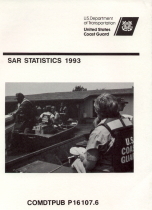 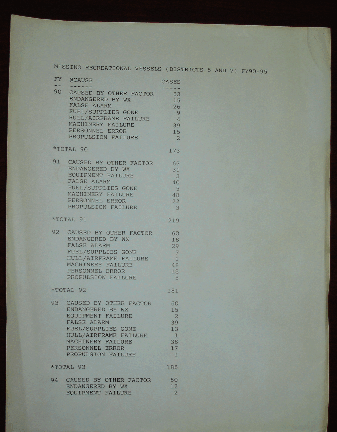
It is not surprising that one should be wary of the cause of missing yachts. They vanish for any number of reasons, uncountable and without name. Even Lloyd’s Casualty Returns are seldom interested in the small stuff, so they go unreported here too. This has been the case for decades, and it has not changed.
Therefore aircraft disappearances allow one to approach the meat and bones of the mystery far better. They are far fewer in number and thus it is possible to investigate every one. Many conventional theories can also be dispensed with prior to investigation: midair high jackers, tidal waves, whirlpools, sea creatures, or hitting reefs and rocks.
Air Force reports will be the most edited, especially the more recent. Often it takes months to get one. For one report I waited 6 months, and it was the only report that had a razor taken to it, whole paragraphs having been cut out. Navy reports are different. They often allow the conclusions and opinions to be left in the report (the Air Force does not), and on occasion the report is not edited at all.
Historical research is more costly and not always as easy. Documents are maintained by many different libraries, museums or repositories. Many of them are now going up on the Web. Most of my intense research was done before any Internet. Then I stopped and occasionally got updates from NTSB on anything current. When I decided that I should actually share what I discovered on the Internet, I was delighted to see how many of these institutions are now up and running. I had to ferret out places over months and years of gratuitous referrals from others. Now on the Web access is fast and easy. National Transportation Safety Board is uploading a Web version of a “Brief.” Miami Herald is up and running and has cleverly placed an archive of all its articles going back through 1982. Lloyd’s List is published by LLP Limited and has an archival base back through 1991. What used to take me months and detailed inquiry letters is now accomplished in minutes! One note: it costs over 1,000 dollars to get the Lloyd’s List subscription, and Herald downloads also cost per article.
I had to hire foreign researchers to get info for me. Now Guildhall Library in England, where Lloyds Lists from the last 2 centuries are kept, is on the Web, though they have made no link yet for any of Lloyds Maritime Collection except Captain’s names.
The U.S. Naval Historical Center is up and running as well. They still hold the accident report on the loss of Flight 19, the incident credited with “creating” the Bermuda Triangle mythos. The web site actually walks you through a FOIA request, offers published and non published reports, and informative pages on its history.
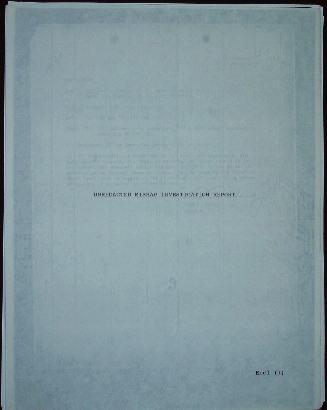  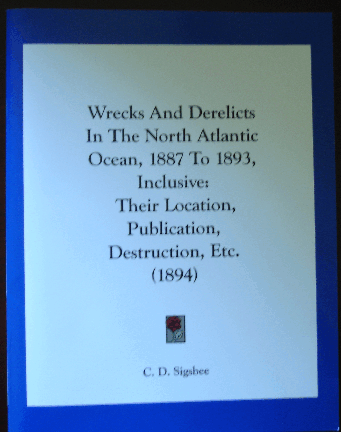 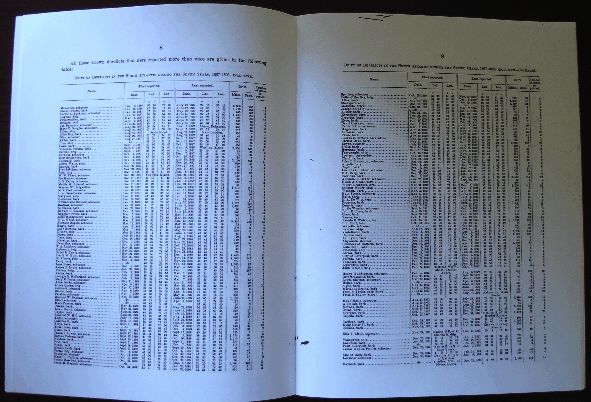
To get old CAB (Civil Aeronautic Board) reports on airplane losses one must still go to a Federal repository library, find a GPO (Government Printing Office number) in order for the National Archives to find it. This would be if you are looking for reports prior to the NTSB, such as during the 1940s, ’50s and ’60s. National Archives is online, but so far has not been any real help: www.nara.gov But you can use this link to contact them directly. Photocopies cost money, but the amount they hold on some very famous mysteries is worth it. A few examples are: the U.S.S. Cyclops (boxes 1068 to 1070 Modern Military Branch); schooner Carroll A. Derring (vessel found derelict in 1921); the famous Mary Celeste (derelict 1872); Gloria Colita (derelict 1940); various photographs and logs.
General Microfilm holds the documents of the NTSB. Now that they are on the Web they even provide links on how to get a Preliminary or a Factual. Everything is becoming so much easier with the Web! If you are a pilot it would be foolish of you not to study their database and those of the NTSB. It may save your life! Seeing what others have perished from is one of the best educations in flying, something you don’t get in flight training.
In my research to document the Bermuda Triangle, I discovered the phenomenon was true. More ships and plane do disappear there in fair weather than other locations, some of them in truly bizarre circumstances. I was the first individual with these very powerful facts in hand, all from official government repositories. I decided to share them on the web with anybody who was interested. It cost me thousands of dollars, thousands of hours, a lot of frustration, energy, ridicule and patience.
In making these links, repositories and cases available, I hope this causes the reader to accomplish what the Internet was first designed for: an information highway. Having detailed documents at your fingertips will spare you the machinations and condescension of both sensationalists and reactionary debunkers. You can decide for yourselves whether there is real mystery and whether there is not.
With this web site hopefully the reader will have a good command of what does happen in the Bermuda Triangle, the context in which it occurred, and an understanding of the unique and enigmatic sea over which it happened.
|